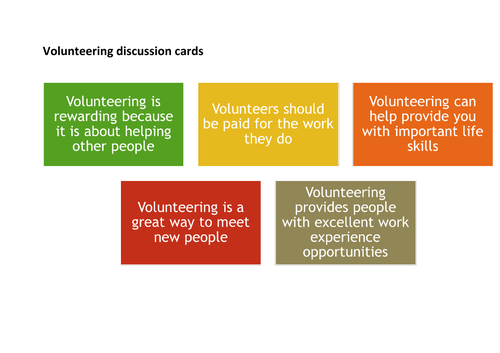























This English teaching unit is built around the topic of volunteering and teaches key skills relating to speaking and listening, responding to texts and writing. It is designed for a Junior Cycle Year 2 class but could be used with other year groups depending on ability. It covers skills such as discussing and presenting, explores texts including posters, on-line information texts and adverts with students exploring key features before completing an analytical response. The writing section helps students to plan and complete a formal letter of application and an argumentative essay. A well-presented 56 slide teaching PPT is included in PDF format as are all nine student resources in both Word and PDF format and a set of detailed teacher notes. I hope you enjoy teaching the unit.
Junior Cycle Learning Outcomes include:
Spoken Language
- Know and use the conventions of oral language interaction, in a variety of contexts, including class groups, for a range of purposes.
- Deliver a short oral text using appropriate language, style and visual content for specific audiences.
Writing - Demonstrate their understanding that there is a clear purpose for all writing.
- Write for a variety of purposes, e.g writing to analyse and to argue.
- Write competently in a range of text forms, for example formal letter.
Reading - Use a wide range of reading comprehension strategies appropriate to texts, including digital texts.
- Use an appropriate critical vocabulary while responding to texts.
- Read their texts to understand and appreciate language enrichment by examining an author’s choice of words, vocabulary and language patterns, and images, as appropriate to the text.
Something went wrong, please try again later.
This resource hasn't been reviewed yet
To ensure quality for our reviews, only customers who have purchased this resource can review it
Report this resourceto let us know if it violates our terms and conditions.
Our customer service team will review your report and will be in touch.